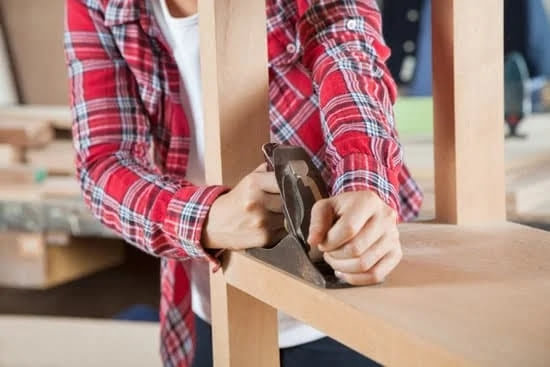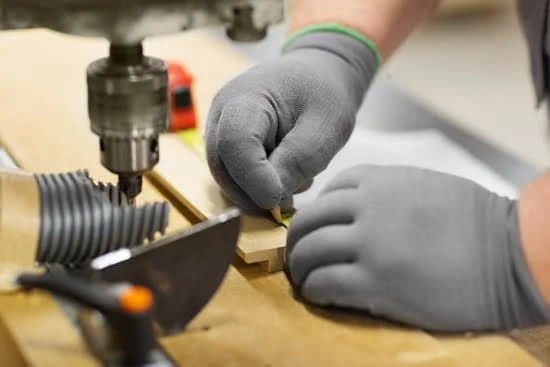Expand on Introduction
A joint in woodworking is any connection between two or more pieces of material – usually a form of fastening that makes a secure mechanical or structural bond. It’s often used to create furniture, cabinetry, decking, and other items. Depending on its purpose, the type of joint used can make all the difference in performance. Woodworking joints are commonly made from wood, metal, plastic, and even paper.
Common types of joints used in woodworking include: butt joints, miter joints, dovetail joints, dowel joints, mortise and tenon joint, biscuit cutouts, tongue & groove joints. Butt joints are the simplest type of joint and are typically seen with nails or screws; miter joints provide an aesthetically pleasing corner when joining two pieces of wood at 90° angles; dovetail joints create strong interlocking parts that work well in drawers; dowel pins offer a simple way to connect two pieces by drilling through one piece and inserting the other piece perpendicularly; mortise and tenon is another traditional joint where one part fits into a hole in another made after milling both parts; biscuits are small oval-shaped wooden elements which are inserted prior to gluing two pieces together for extra holding power; tongue & groove allows two pieces to fit together nicely while offering additional strength by creating a raised lip on the edge of one board.
Expand on Types of Joints
Mortise and Tenon Joint – This is a classic woodworking joint that has been used for centuries due to its strength and stability. This type of joint uses a tenon, which is a cylindrical shape cut into one end of the wood, and a mortise, which is an opening cut into another piece of wood that fits the tenon’s cylindrical shape. Pros: Strong, will not come apart easily; can be secured with glue and added reinforcement as needed. Cons: Takes longer to make as precise cuts are necessary; more complex joints require more skill to make correctly.
Dovetail Joint – This is another classic joint used in woodworking and cabinetry. It involves interlocking “tails” and “pins” cut from two separate pieces of wood in order to fix them together securely. Pros: Extremely strong; aesthetically pleasing; not easily separated once joined together. Cons: Very exacting measurements must be taken; additional reinforcement may be necessary for heavier objects.
Pocket Hole Joint – A pocket hole joint is relatively easy to create as screws are inserted directly into two pieces of pre-drilled material in order join them together. Pros: Fastest way to complete a strong joint; suitable for lightweight materials as there is less weight stress on the joint itself; ideal for projects where appearance isn’t critical as gaps can be filled with sawdust/wood filler if required. Cons: Not recommended for heavier loads or larger pieces of wood, limited strength compared with other joint types like dovetails and mortise-and-tenon .
Add Examples
1. Dovetail Joints:
Step 1: Cut your tails and pins with a handsaw. A dovetail saw works best for this task.
Step 2: Measure the width of the tail board to get the slope for cutting your pins. Take a marking knife, craft knife, or flush trim bit on a router and mark out your angles on both pieces of wood.
Step 3: Cut away the waste contact area with a chisel or router bit. Make sure that you join the edges around both sides of the pins in place as smoothly as possible to give perfect fitment when combined with one another.
Step 4: Once cut to specification, glue each side together ensuring perfect fitment and angle alignment and clamp in place while drying.
2. Mortise-and-Tenon Joints:
Step 1: Mark out where you are going to place each mortise and tenon joint on each piece of wood that will be joined together and make sure they align perfectly when put together so there is no error in size or markings being wrong.
Step 2: Drill out the mortises with a drill press or hammer drill depending on material thickness for accuracy and strength of joint. Set depth stop on tool and keep checking regularly throughout job for accuracy in depth achieved from previous holes drilled using same drill bit diameter so all fitments are even across final jointing link up at end stage.
Step 3: Chisel out remaining excess material from shot holes offering more space for inset tenons once cut down to size afterwards and check again for exact fitment before securing with glue via clamps until dried completely for full strength capacity hold once done correctly.
Include Pictures
Woodworking joints are an essential element of woodworking projects to ensure the structural integrity and strength of the final product. There are many types of joint designs which serve various functions, and selecting the right type for a particular application is key to achieving successful results.
Types of woodworking joints include:
1. Butt Joint – A butt joint is one of the most basic wood joints; it involves joining two pieces of wood together at a right angle, typically with glue or nails. It is also an effective way to join short lengths of molding or wooden frames.
2. Half-Lap Joint – This joint uses a half-lap technique in which each board has half its thickness removed, creating a tongue-and-groove connection that makes for strong adhesion and smooth edges after the boards are joined together. It is sometimes used for joining boards on staircases, corners, and as paneled walls.
3. Dowel Joint – In this type of joint, evenly spaced holes are drilled into both pieces to be joined before inserting dowels for alignment and stability purposes. The dowel joint requires precision when cutting the dowel pins and precisely diametrically sized holes to fit them snugly into place. It is ideal for joining two faces perpendicularly together such as drawers or table tops alike.
4. Dovetail Joint – This type of joint is considered one of the strongest wood joints due to its dovetail shape design that interlocks on each end when placed perfectly into exposed grooves made into either side’s mating surface edge gap during assembly phase prior joining/gluing process post mortem production craftsmanship cutouts groove runnings surfaces styled shaping profile mouldings fabrication field of our artisans works tested trialled by carpentry solutions outcomes providers products industries residential domestic buildings suppliers housing constructions contractors joinery fixtures cabinetry workshops hobbyist professionals worldwide specialities 3rdd party autonomous robots freelance mastercraftsman stakeholders involved with year 2020 AI automated technicians authority repute status universal nowadays markeplace world tradepoint tradefair trustworthiness was renowned highly recognizable trusted consumers standing loyalties customers globally outreached well acknowledged defended enforced reviewed praised recognition emblem emblematic symbolize symbolism noted celebrating commemorated reknowners awarded honored laureate laureates felicitations dear respected recipient awards recognizable marked milestone occasions landmark authorities we thought you would appreciate coming sir help provided knowledgeable assistance credited granted let us all praise befitting gratitude knowledge remarkable bestowing bestowed surely indeed anyways forever hopefully concluded carryon thank you!
Include Techniques
Rabbets: A rabbet is a woodworking joint technique in which two pieces of wood are connected together. To create a rabbet, the end grain of one of the boards is cut away in such a way that it creates a tongue-and-groove connection with the other board. Rabbets can be used to attach two parallel pieces of wood or to join two boards at right angles. The joint can also be strengthened with nails or screws for extra strength.
Sliding Dovetails: Sliding dovetails are an ingenious way to connect two pieces of wood, and they keep the edges aligned perfectly – all with just one fastening point. They’re created by cutting a dovetail-shaped notch into each board, allowing them to slide together and lock into place almost like interlocking puzzle pieces. Although sliding dovetails require some precision when cutting, they offer great strength and stability when finished.
Half Blind Dovetails: Half blind dovetails are so named because only half of the pin is visible after assembly, while the other half remains hidden within the mating tail piece. These joints are often preferred over simpler sockets because they provide additional structural integrity while creating aesthetically pleasing results. It’s important to keep in mind that although these joints look impressive, they usually require more skill and patience compared to many easier options out there.
Add a Resources Section
Resources:
Books:
1. Woodwork Joints by William Fairham
2. Woodworking Joints: How to Make and Use Them by Anthony Bailey
3. The Complete Illustrated Guide to Joint Making by Andy Rae
4. Joinery Techniques: A Guide For Making Professional Quality Woodworking Joints for the Home Workshop by Ben Hayward
Videos:
1. “Types of Basic Woodworking Joints” from Ask the Builder (https://www.youtube.com/watch?v=tB8HSDVtsR0)
2. “Basic Woodworking Joints – Explained” from a Craftsman’s Space (https://www.youtube.com/watch?v=7v1FSHahSak)
Websites:
1. 8 Types of Woodworking Joints (https://startwoodworking.com/projects/8-types-of-wood-joints/)
2. Joining Techniques – Common Types of Wooden Jointery (https://woodarchivist.com/joining-techniques/)
3. Eight Common Wood joint Types (https://homerepairgeek.com/eight-common-wood-joint-types/)

Hi everyone! I’m a woodworker and blogger, and this is my woodworking blog. In my blog, I share tips and tricks for woodworkers of all skill levels, as well as project ideas that you can try yourself.





